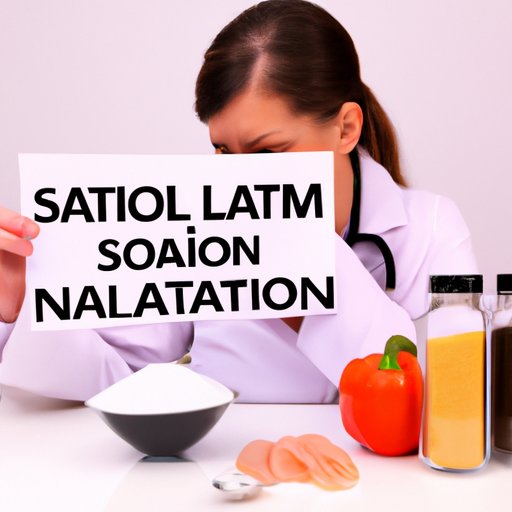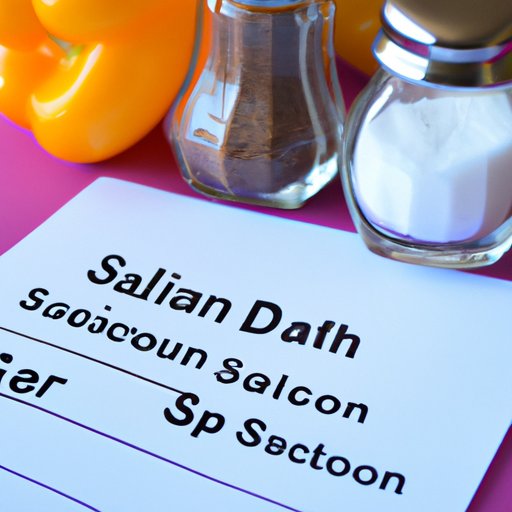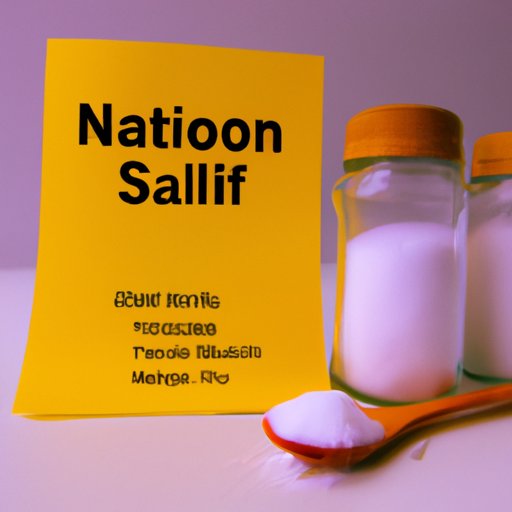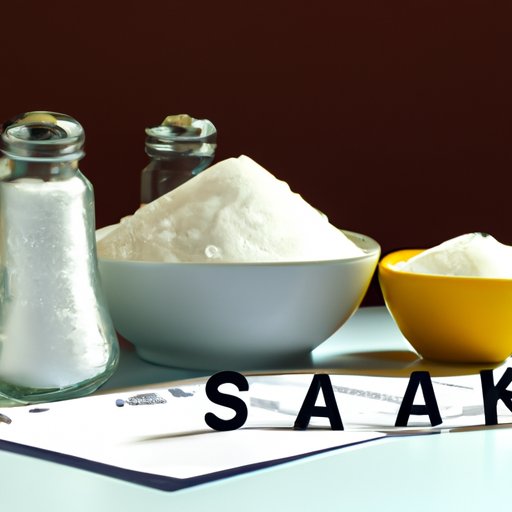Introduction
Sodium is an essential nutrient in our diets, but too much can increase the risk of chronic diseases such as high blood pressure, stroke, and heart disease. Knowing how much sodium you should consume each day is an important part of staying healthy. In this article, we’ll explore what is a healthy amount of sodium per day and how to reduce your sodium intake for improved health.
Overview of Recommended Daily Intake of Sodium
The American Heart Association recommends that adults consume no more than 2,300 milligrams (mg) of sodium per day – which is equivalent to one teaspoon of salt. People with high blood pressure or other conditions may be advised to limit their sodium intake even further to 1,500 mg per day.

Reasons for Examining Sodium Intake
Eating too much sodium can lead to a number of health problems, including high blood pressure, stroke, heart disease, and kidney disease. Many processed and packaged foods are high in sodium, making it easy to exceed the recommended daily intake without realizing it. For this reason, it’s important to understand where sodium comes from and how to limit your intake.

Identifying Sources of Sodium in the Diet
Most of the sodium we consume comes from processed and pre-packaged foods, such as canned soups, processed meats, and frozen meals. Common food sources of sodium include:
- Bread and rolls
- Cold cuts and cured meats
- Pizza
- Soups
- Burritos and tacos
- Sandwiches
- Cheese
- Snack foods (e.g., chips, pretzels)
In addition to these common sources, there are also many hidden sources of sodium in the diet. These include condiments such as ketchup, mustard, soy sauce, and steak sauce; salad dressings; and flavored beverages such as sports drinks and energy drinks.
Exploring the Benefits of Eating Low-Sodium Foods
Eating a low-sodium diet can have numerous health benefits, including:
Lower Blood Pressure
High blood pressure is a major risk factor for heart attack, stroke, and other cardiovascular diseases. Studies have shown that reducing sodium intake can lead to a significant decrease in blood pressure. A diet rich in fresh fruits and vegetables, lean proteins, and whole grains can help to lower blood pressure over time.
Improved Heart Health
Reducing sodium intake can also help to improve overall heart health. A diet low in sodium helps to reduce the risk of hypertension, which can lead to stroke, heart attack, and other cardiac events. Eating a balanced diet with plenty of fruits and vegetables, whole grains, and lean proteins can help to keep your heart healthy.
Reduced Risk of Chronic Diseases
Limiting sodium intake can also reduce the risk of chronic diseases such as kidney disease, osteoporosis, and some types of cancer. Eating a balanced diet with plenty of fresh fruits and vegetables, whole grains, and lean proteins can help to reduce the risk of chronic diseases.

Reducing Sodium Intake for Improved Health
Understanding the risks associated with high sodium diets is the first step to reducing your sodium intake for improved health. Here are some tips for adopting a low sodium diet:
Read Nutrition Labels Carefully
When shopping for food, look for products that are labeled “low sodium”, “no added salt”, or “reduced sodium”. Reading nutrition labels carefully can help you identify foods that are higher in sodium than others and avoid them.
Choose Fresh, Unprocessed Foods
Fresh, unprocessed foods such as fruits, vegetables, and lean proteins are naturally low in sodium. Eating a diet rich in fresh, unprocessed foods can help you stay within the recommended daily intake of sodium.
Use Herbs and Spices to Flavor Food
Using herbs and spices instead of salt can add flavor to your food without adding sodium. Experiment with different herbs and spices to find combinations that you enjoy.
Limit Salt Added at the Table
If you do add salt to your food, use a measuring spoon to limit your intake. Even small amounts of salt can add up quickly, so be mindful of how much you’re adding.
Conclusion
Eating a low-sodium diet has numerous health benefits, including lower blood pressure, improved heart health, and reduced risk of chronic diseases. Understanding the risks associated with high sodium diets and identifying sources of sodium in the diet are the first steps to reducing your sodium intake for improved health. By reading nutrition labels carefully, choosing fresh, unprocessed foods, using herbs and spices to flavor food, and limiting salt added at the table, you can stay within the recommended daily intake of sodium and enjoy all the health benefits that come with it.
(Note: Is this article not meeting your expectations? Do you have knowledge or insights to share? Unlock new opportunities and expand your reach by joining our authors team. Click Registration to join us and share your expertise with our readers.)
